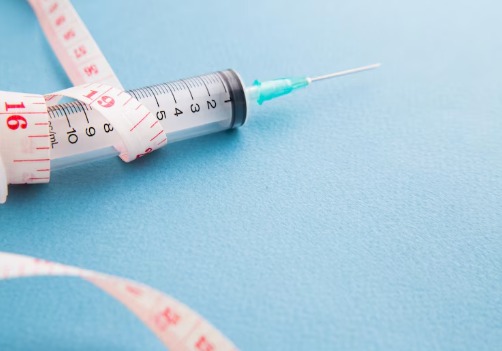Injectable weight loss treatments were limited to high-risk experimental protocols and specialty clinics only a few years ago. These days, they are influencing social media confessionals, headlines, and arguments at dinner tables. Transformation stories—some sincere, some aspirational—supported by well-known figures like Oprah or Elon Musk are all over platforms like TikTok and Instagram.
These drugs, which include Ozempic, Wegovy, Mounjaro, and Saxenda, are not phony medical aids. Instead, they mark a turning point in our knowledge of and approach to obesity. These injections, which target the hormone GLP-1, which naturally reduces hunger by slowing digestion and increasing satiety, are remarkably effective for many users. Consider changing the internal switch in the body from “always hungry” to “comfortably full.”
| Category | Details |
| Primary Medications | Semaglutide (Wegovy, Ozempic), Tirzepatide (Zepbound, Mounjaro), Liraglutide (Saxenda) |
| Mechanism of Action | Mimic GLP-1 hormone to reduce appetite, slow gastric emptying, and promote satiety |
| Target Audience | Adults with BMI ≥27 with comorbidities, or BMI ≥30; children 12–17 (Saxenda only, for obesity) |
| Dosage Frequency | Weekly (Ozempic, Wegovy, Zepbound, Mounjaro), Daily (Saxenda) |
| Common Side Effects | Nausea, vomiting, diarrhea, constipation, acid reflux, bloating |
| Efficacy Rate | 15–22% body weight reduction (Zepbound shows highest efficacy) |
| Cost | Approximately $1,200/month without insurance; cost varies with coverage and discount programs |
| Insurance Coverage | Limited to diabetes patients in most cases; appeals or documentation required for obesity-related approval |
| Emerging Developments | Triple agonist drugs in trials; target additional hormone pathways to increase fat loss while preserving muscle mass |
| Reference Website | Saxenda Official Site |
Doctors are increasingly prescribing these drugs to patients with BMIs over 27 who have complicating health issues or who are over 30 in general. Their impact is similar to a medically engineered form of bariatric surgery, according to Dr. Kurt Hong of USC’s Keck Medicine. He emphasizes that these are not short cuts. “They are clinical tools that need to be monitored, disciplined, and part of a long-term health plan.”

But the drastic visual changes they allow are changing standards of beauty at a startling rate. Weight loss through injections has revived the ultra-thin figure ideal of previous decades, especially in the fashion and media circles. However, this time, the goal is pharmaceutical precision rather than stimulants or starvation. These substances are increasingly being used as tools by stylists and casting directors.
Significantly, this change creates an obvious inequity. Two factors determine access: diagnosis and wealth. Many people are forced to pay out of pocket unless they are prescribed medication for diabetes or another chronic condition, which creates a financial barrier that makes the average monthly cost of $1,200 intimidating. Even when a patient’s weight is causing real health issues, insurance companies are hesitant to approve reimbursement for off-label use because they are still catching up.
An unsettling narrative is being created by this economic divide, one in which losing weight—once thought to be a matter of personal willpower—is now viewed as a luxury good. There is a “body reset” option, but only for those who have the appropriate insurance or funds.
Still, innovation is happening at a dizzying rate. Pharmaceutical firms like Eli Lilly hope to introduce “triple agonist” injectables by 2026, which stimulate three hormone pathways linked to hunger instead of just one. These formulations, which are presently undergoing clinical trials, may be much more effective while maintaining muscle mass, which is a major issue with existing drugs.
These medications are revealing unanticipated advantages in addition to aesthetics. According to recent research, they may help patients with fatty liver disease, diabetes type 2, and even osteoarthritis by lowering chronic inflammation. Pre-surgery prescriptions are being investigated by some orthopedic specialists in an effort to reduce joint pressure and improve surgical results.
These injections are helping to reframe obesity as a chronic medical condition deserving of serious and nuanced care, rather than as a personal failure, by shifting treatment from willpower-based approaches to physiological recalibration. Even if it happens gradually, that shift is a significant step in the direction of equity and empathy in healthcare.
